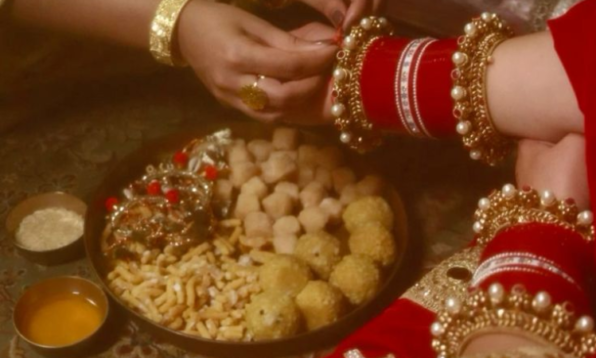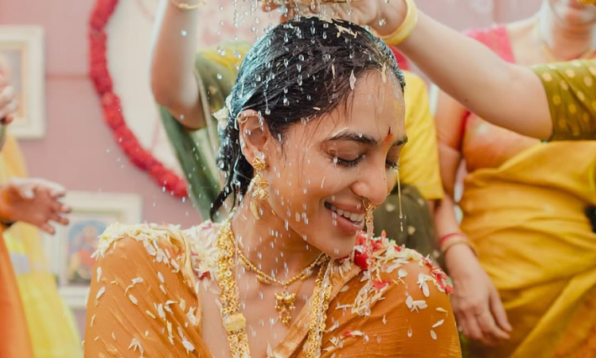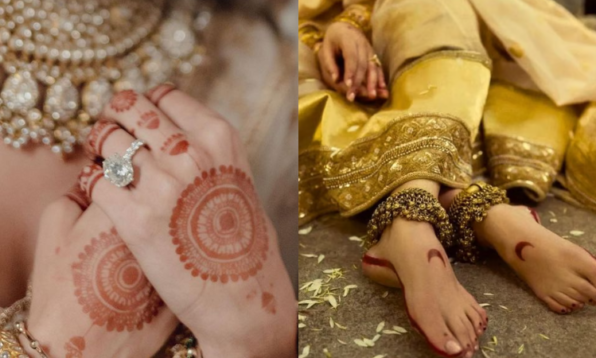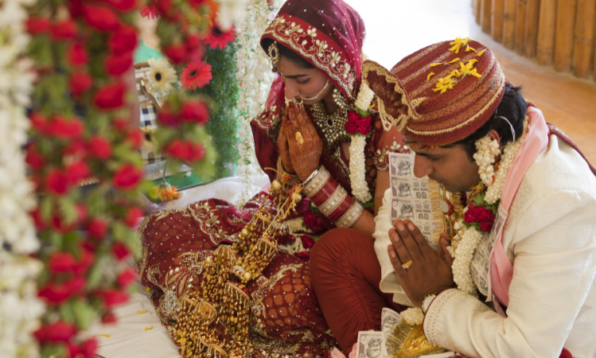Punjabi and North Indian weddings are full of fun rituals and grand celebrations. There’s so much more to them than butter chicken, drinking, and singing ‘oh ho ho ho‘ when the DJ mutes Ishq Tera Tadpaave. An integral part of these weddings are the heartfelt ceremonies. And one such ritual that has been practised over the years is the chooda ceremony. A bride wears a chooda, a set of red and white bangles, just before or on her wedding day. But have you ever wondered what the chooda means? Here’s the significance of the chooda ceremony in Punjabi culture and why it is still relevant.
Related: The Laavan Phere: Sikh Wedding Vows That Signify The Spiritual Stages Of A Marriage
Why do brides wear the chooda?
The chooda ceremony is one of the oldest and most emotional Punjabi wedding traditions. It signifies new beginnings for the bride and is done a day before or on the wedding day. The chooda ceremony is done by the maternal aunt and uncle of the bride. It represents her love and bond with her naanke (mother’s side of the family). A chooda is a part of the nanki shak, from the mother’s family to the bride. It is a set of gifts that includes jewellery, cash, and the wedding outfit. The set of red and white bangles forms a complete chooda and is dipped in milk mixed with water and roses. Since milk is considered pure, the act symbolises purity, fertility, and prosperity for the bride.

Back in the day, the bangles were made of ivory and were hard for the bride to wear; therefore, they were dipped in milk to soften them. The practice is still followed, but now the traditional chooda is made of plastic. The chooda marks the start of a bride’s new life and is given by her maternal family as a blessing to ward off evil and wish her lots of love and prosperity. It signifies the transition of a bride from being single to a married woman. Once placed on the bride’s arms, it is then covered by a piece of cloth and is only removed when the bride enters the venue. That is the significance of the chooda ceremony in Punjabi culture.
Related: Kaleeras That Tell Your Story: 7 Custom Kaleera Brands And Stores For Your Big Day
The kaleera ceremony

Another aspect of the chooda ceremony is the kaleera ceremony. Kaleeras are traditionally tied to the bangles worn along with the chooda and make for a fun ceremony. The sisters or friends of the bride tie kaleeras on her hands, which she later breaks over her unmarried friends and cousins. It is said that whoever the kaleeras fall on will be next in line to get married. Nowadays, kaleeras make for a fun ceremony and can be customised according to the bride’s preferences, but that was not always the case. Do you know the history of kaleeras and why they were tied to the bride’s bangles?
Featured Image Source
Related: Would You Wear Kaleeras At Your Wedding If You Knew The History Behind Them?

 Web Stories
Web Stories













